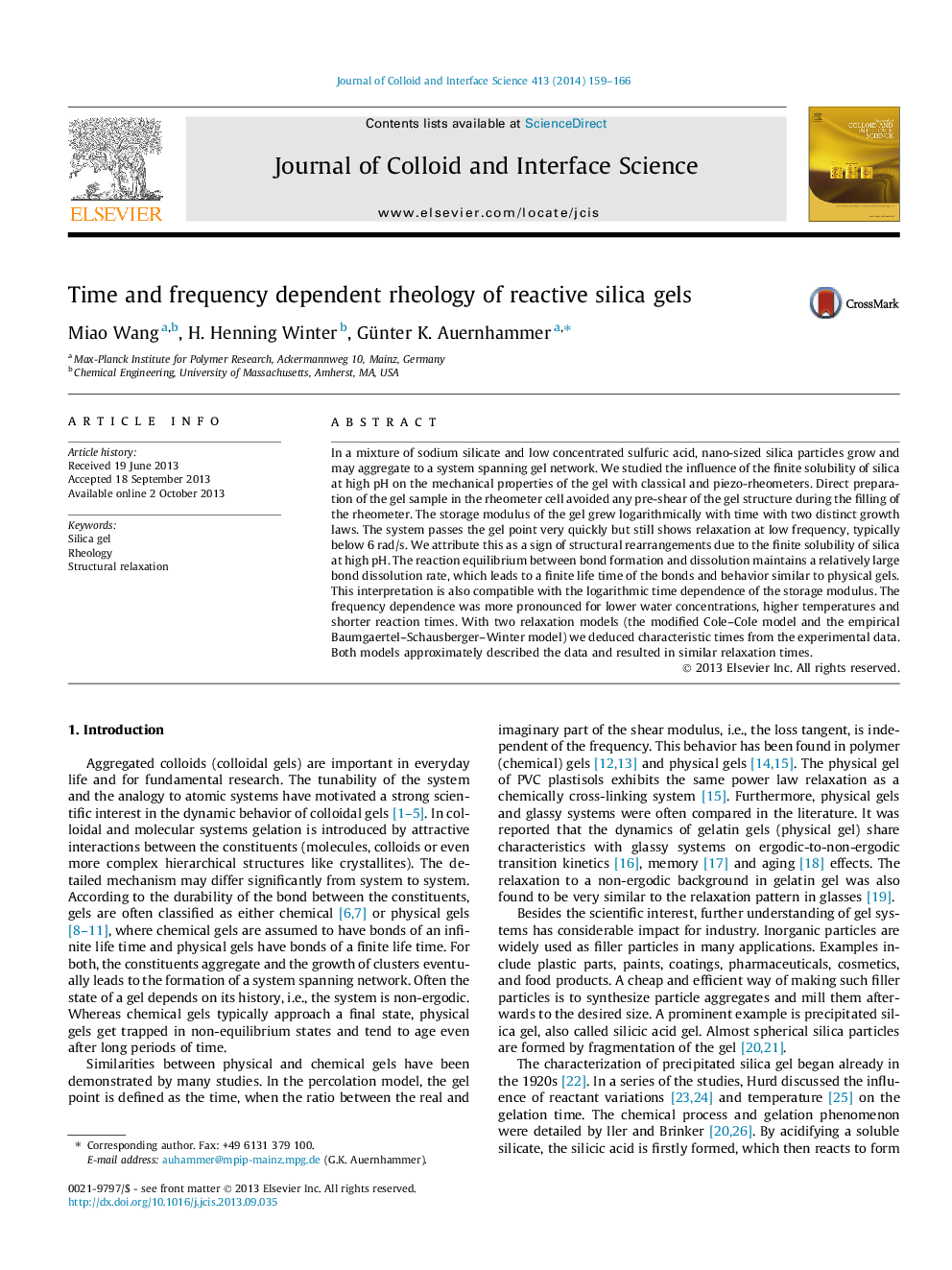| کد مقاله | کد نشریه | سال انتشار | مقاله انگلیسی | نسخه تمام متن |
|---|---|---|---|---|
| 607497 | 1454582 | 2014 | 8 صفحه PDF | دانلود رایگان |
• We study the influence of finite solubility of silica at high pH on its rheology.
• During gel aging the storage modulus grows logarithmically with time.
• Frequency dependent measurements reveal a structural relaxation at low frequencies.
• The solubility leads to a finite bond life time and the physical-gel-like behavior.
In a mixture of sodium silicate and low concentrated sulfuric acid, nano-sized silica particles grow and may aggregate to a system spanning gel network. We studied the influence of the finite solubility of silica at high pH on the mechanical properties of the gel with classical and piezo-rheometers. Direct preparation of the gel sample in the rheometer cell avoided any pre-shear of the gel structure during the filling of the rheometer. The storage modulus of the gel grew logarithmically with time with two distinct growth laws. The system passes the gel point very quickly but still shows relaxation at low frequency, typically below 6 rad/s. We attribute this as a sign of structural rearrangements due to the finite solubility of silica at high pH. The reaction equilibrium between bond formation and dissolution maintains a relatively large bond dissolution rate, which leads to a finite life time of the bonds and behavior similar to physical gels. This interpretation is also compatible with the logarithmic time dependence of the storage modulus. The frequency dependence was more pronounced for lower water concentrations, higher temperatures and shorter reaction times. With two relaxation models (the modified Cole–Cole model and the empirical Baumgaertel–Schausberger–Winter model) we deduced characteristic times from the experimental data. Both models approximately described the data and resulted in similar relaxation times.
Figure optionsDownload high-quality image (66 K)Download as PowerPoint slide
Journal: Journal of Colloid and Interface Science - Volume 413, 1 January 2014, Pages 159–166
